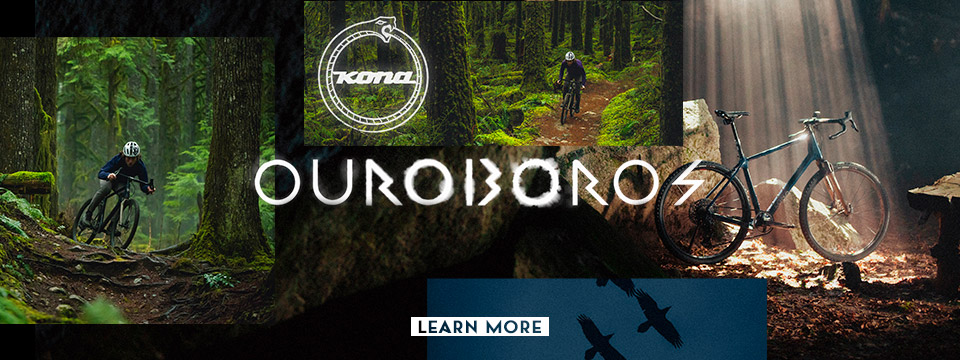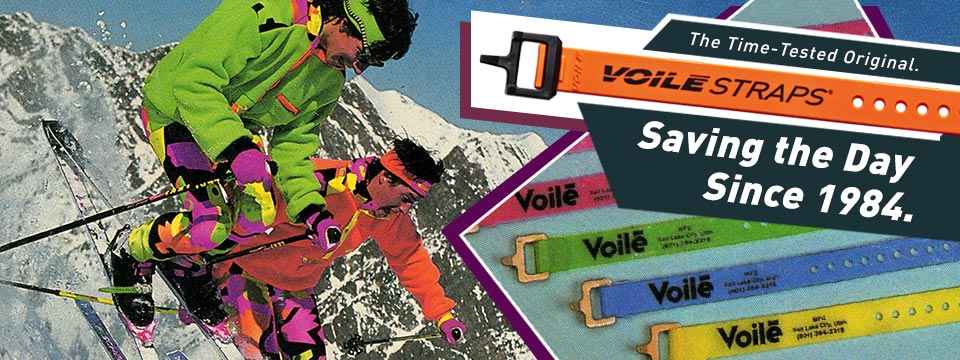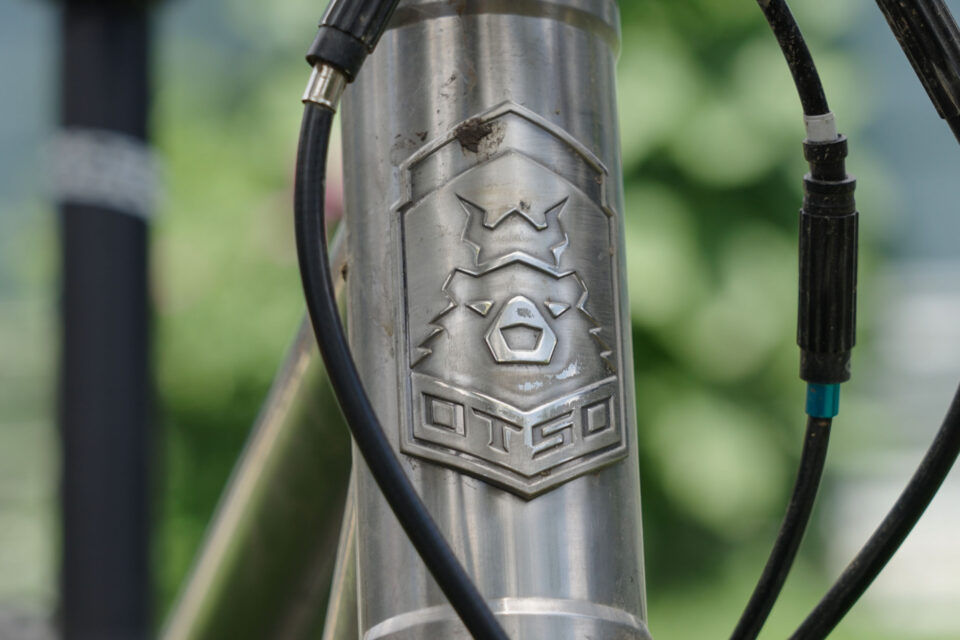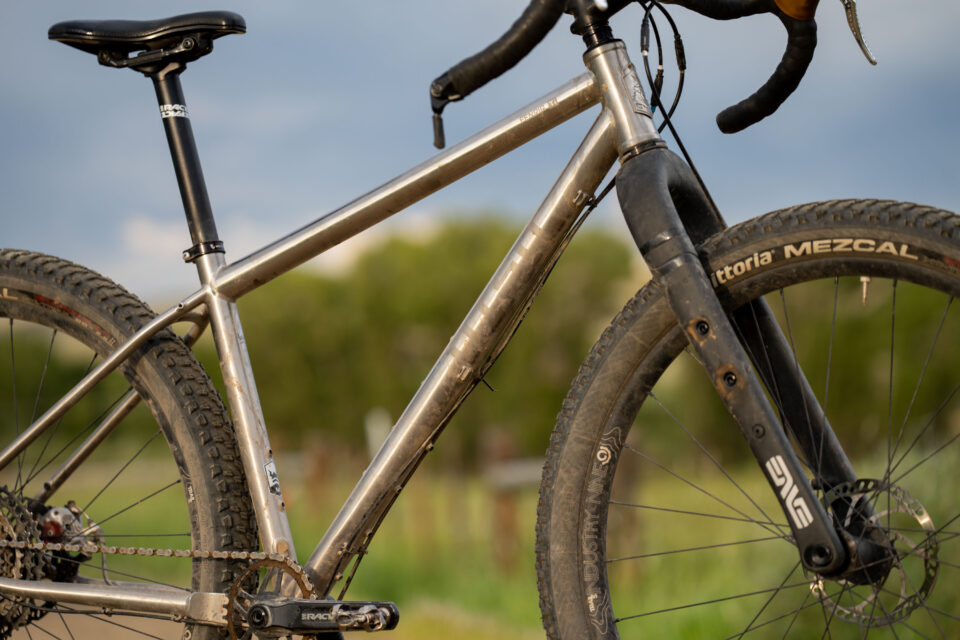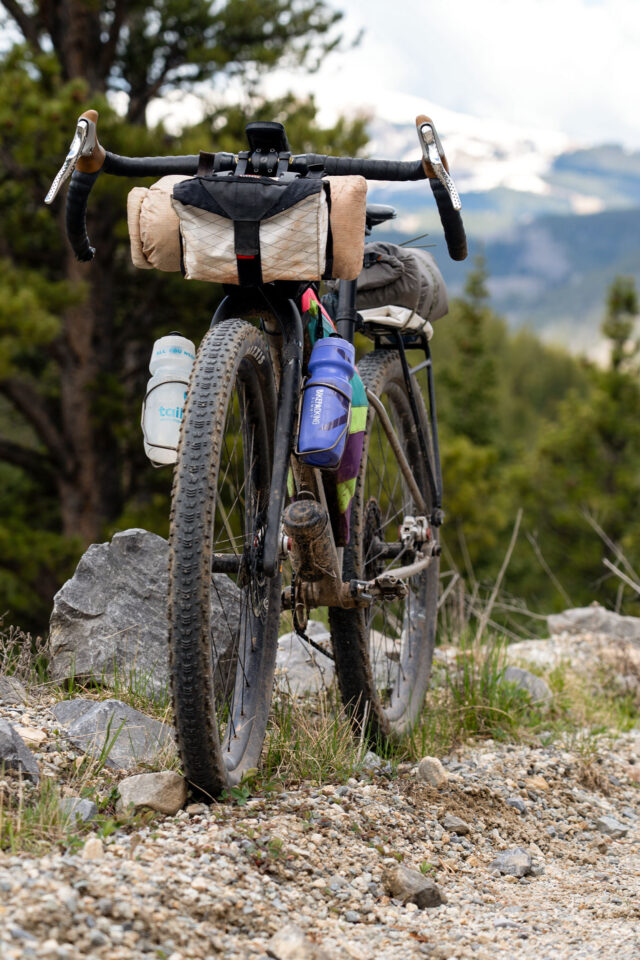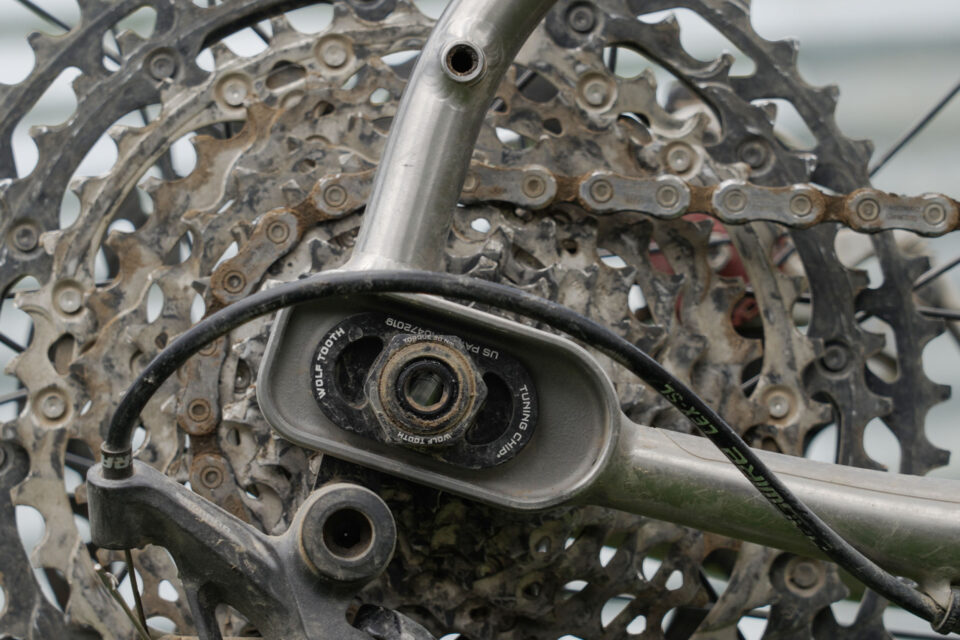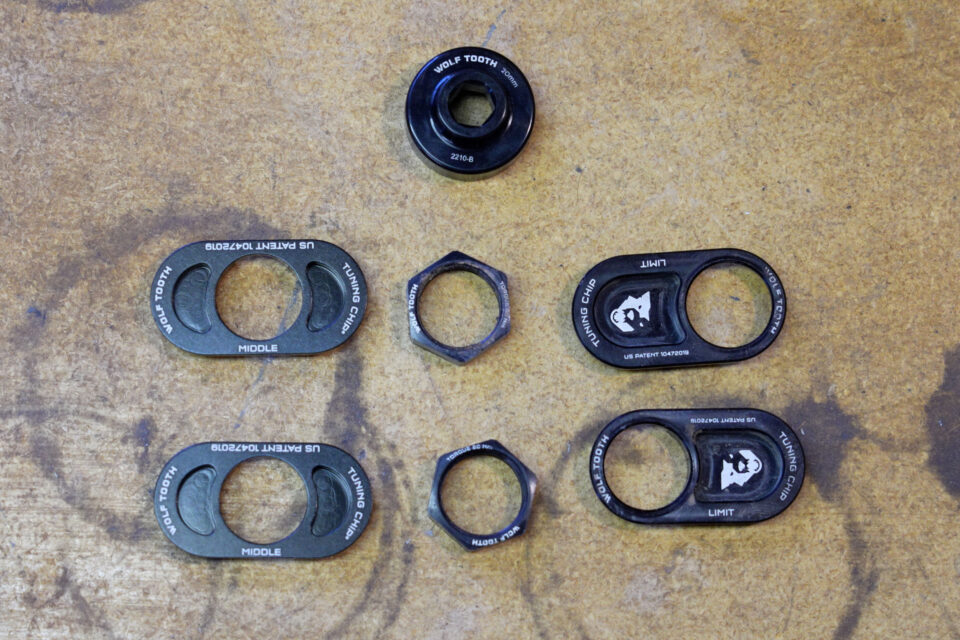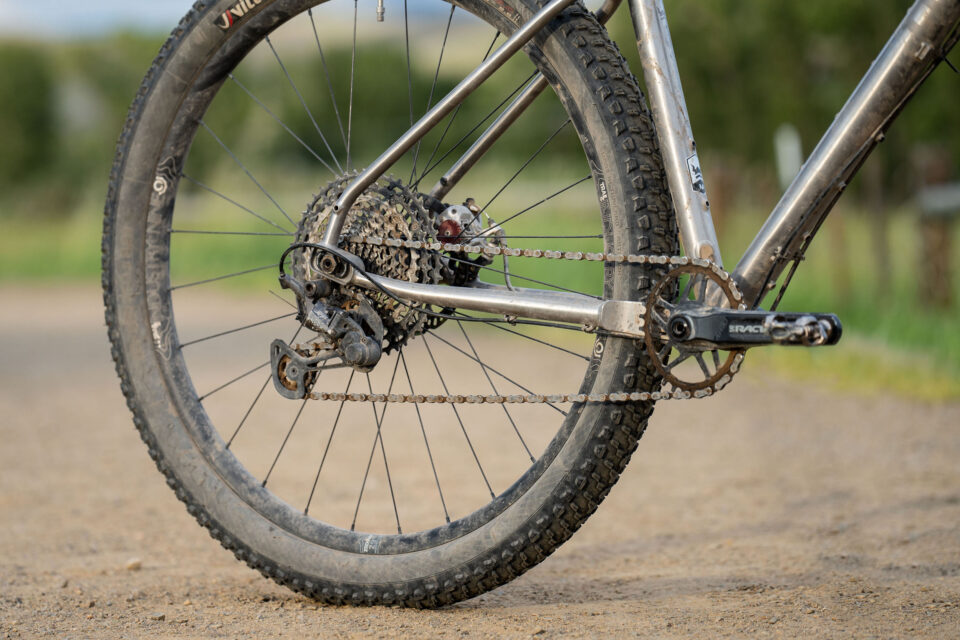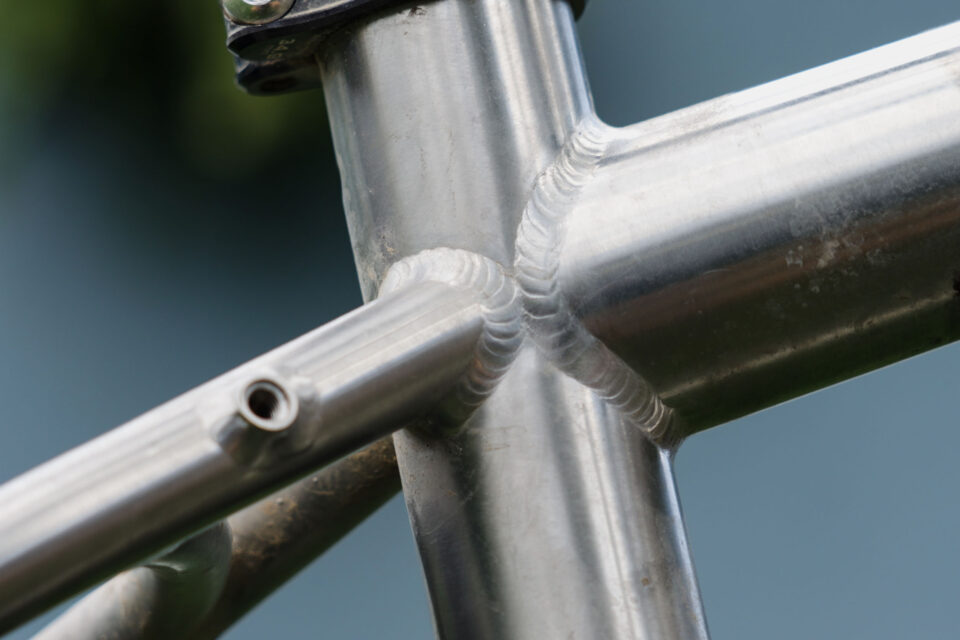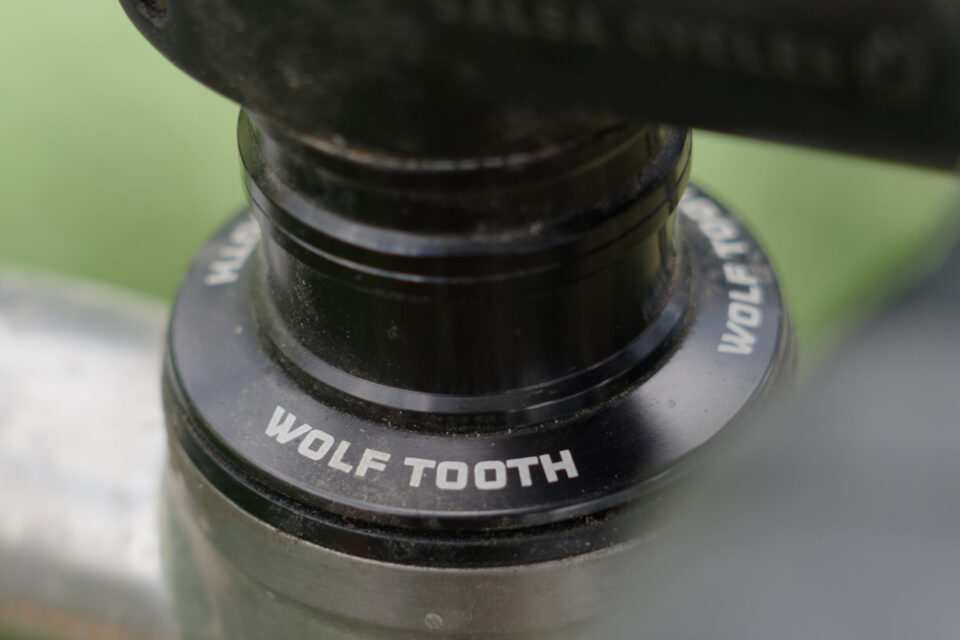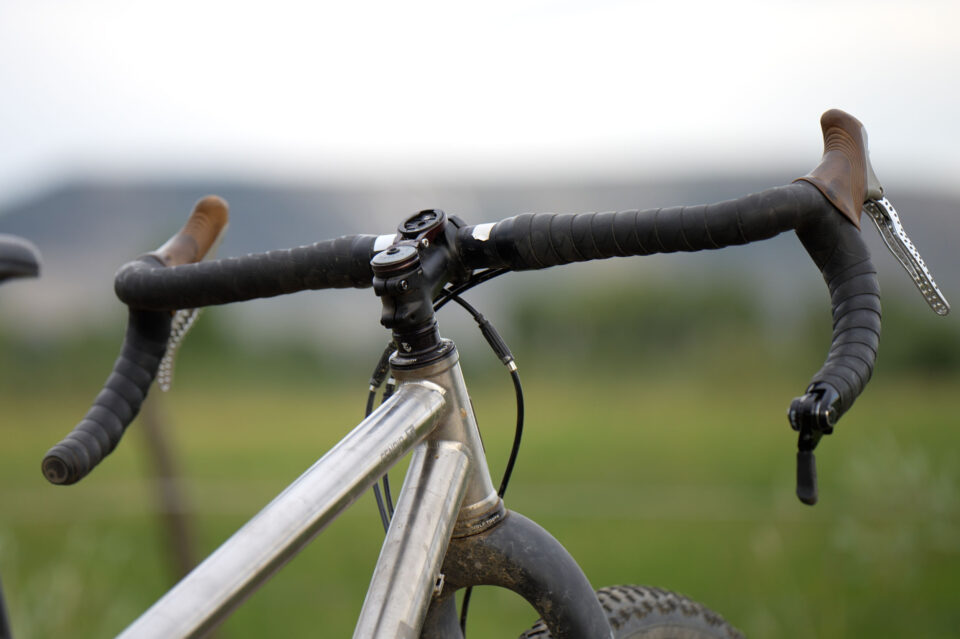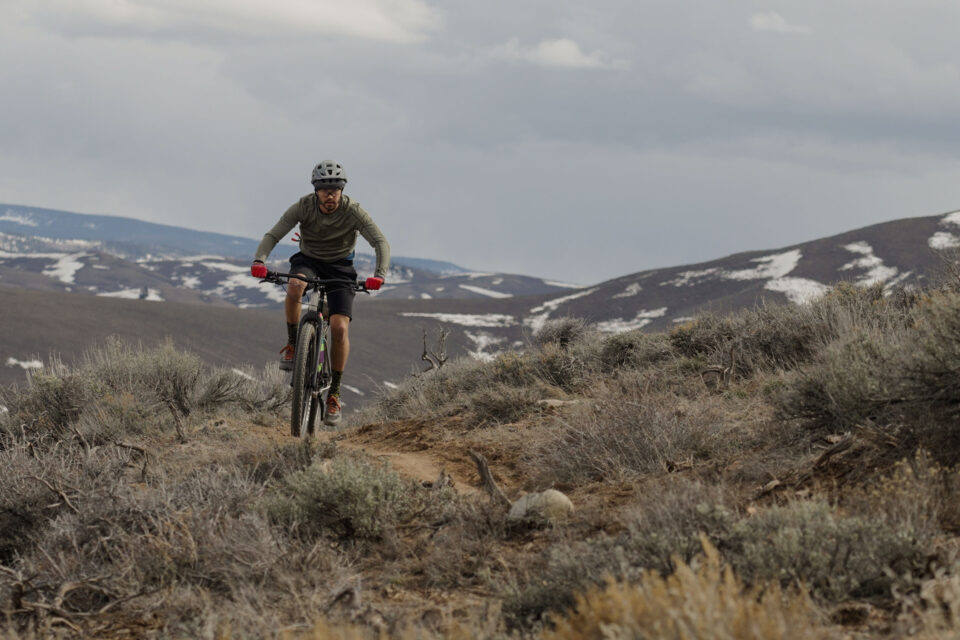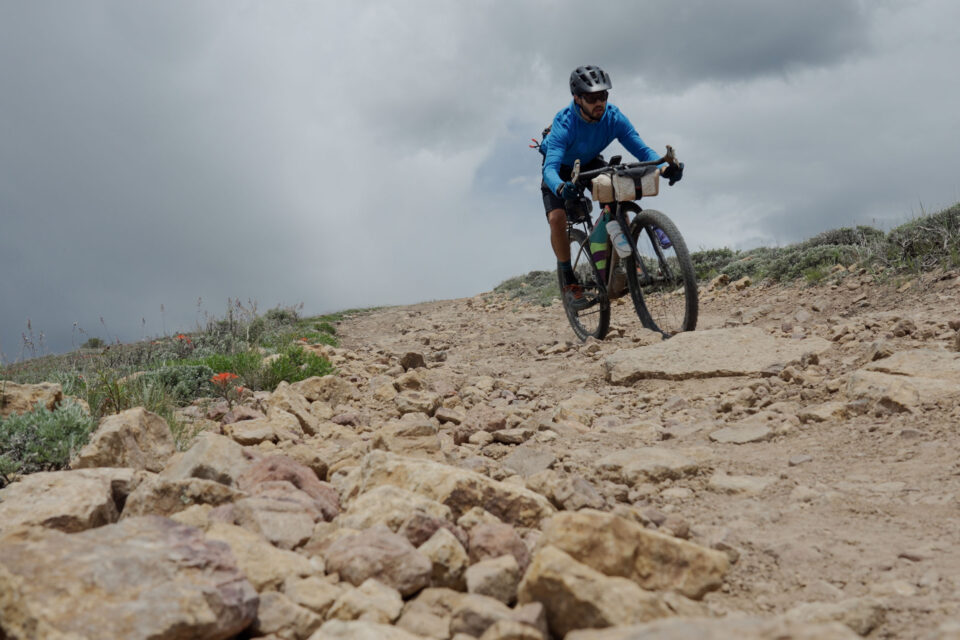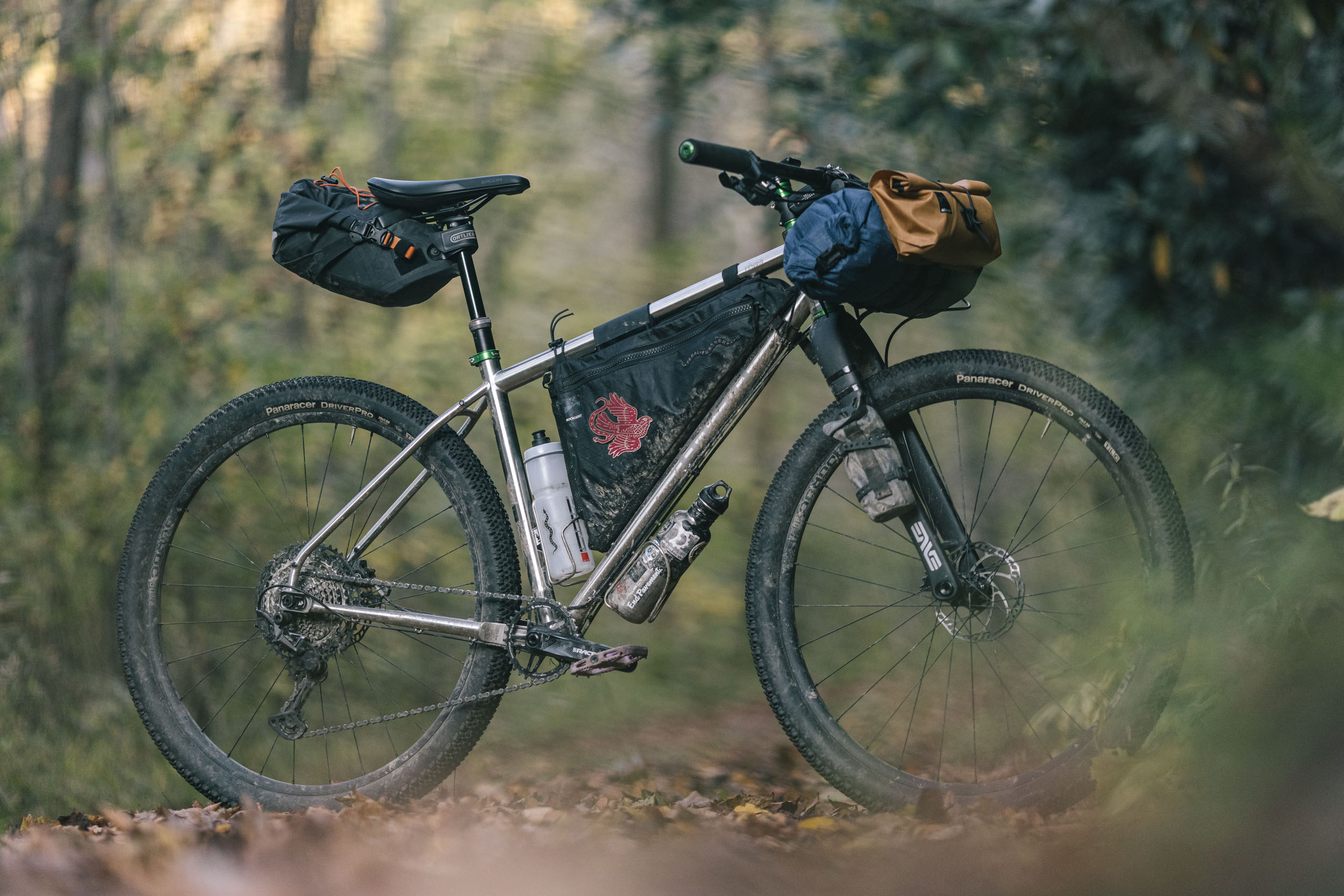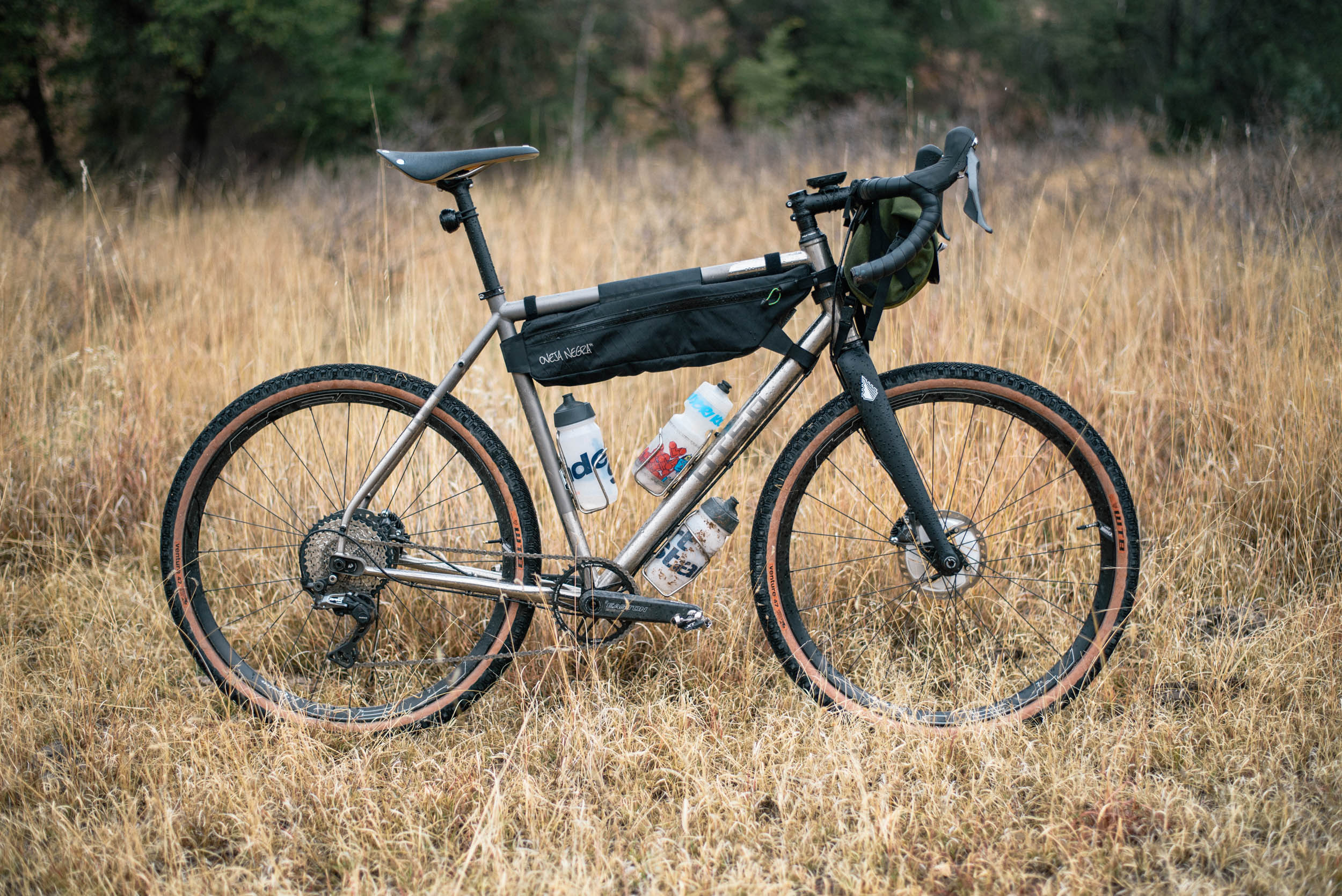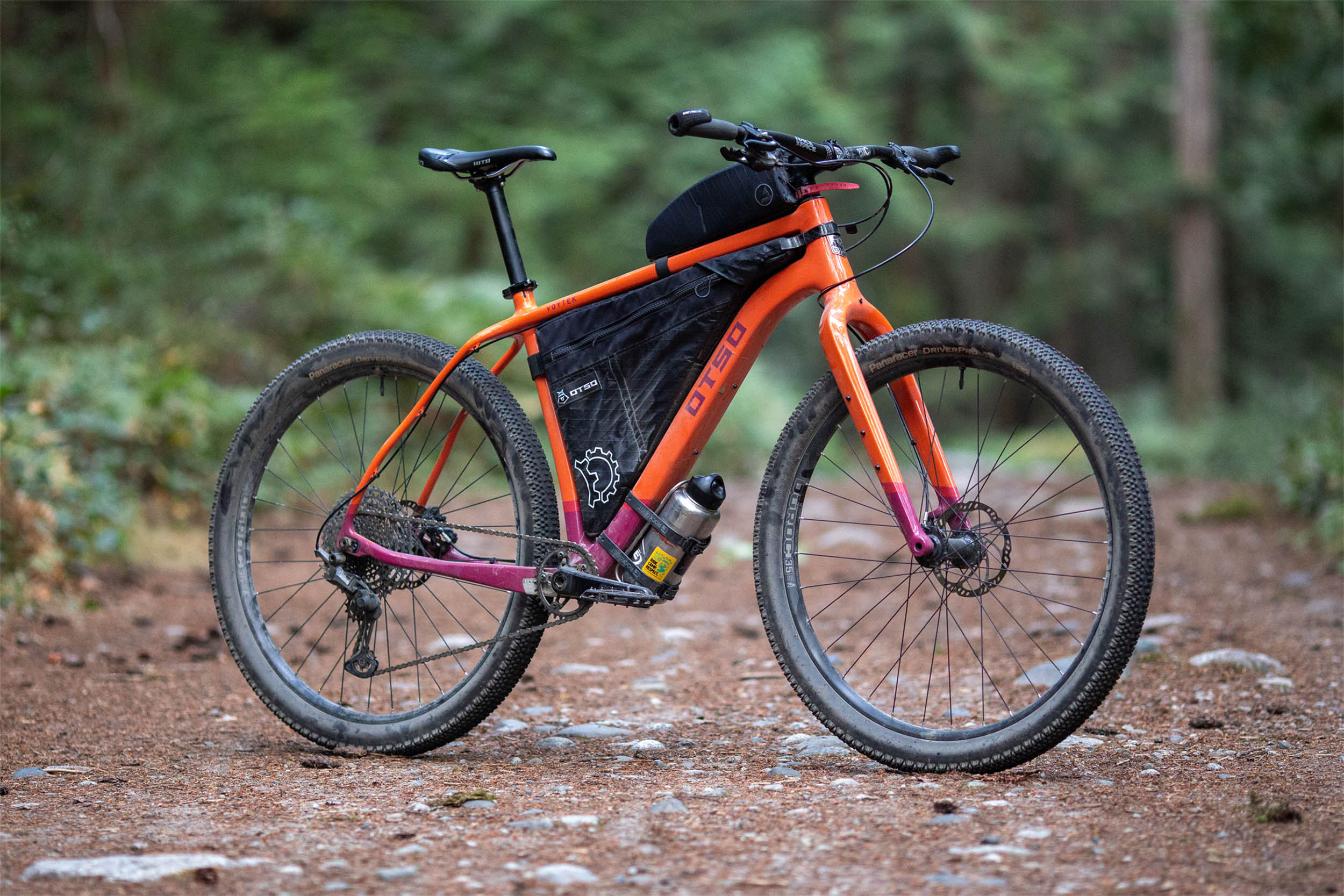Otso Fenrir Ti Review
The Otso Fenrir Ti is a full two pounds lighter than the stainless steel version we reviewed two years ago. Find an in-depth review of the Fenrir Ti after 550 miles of bikepacking, gravel grinding, and trail riding in Utah and Colorado here, plus photos, a swappable build kit, and more…
PUBLISHED Jul 20, 2023
I’m writing this as I sit atop a mountain pass, overlooking the world and this bike; it’s hard not to appreciate what I have accomplished on the Otso Fenrir Ti. It’s been nothing short of a workhorse over the last few months, enduring a few extended bikepacking trips and many gravel and singletrack rides. I pedaled the Fenrir over 550 miles and countless hours, and ultimately put together a full review that you can watch below. Plus, scroll down for a written version, pros and cons, and loads of photos.
The Otso Fenrir Stainless Steel launched in 2021, and Logan reviewed the flat-bar version after riding it more than 1,000 miles. Last year, Otso rolled out a titanium version of the Fenrir, which included the same geometry, mounts, tuning chip, massive tire clearance, and flat and drop bar builds, adding another highly intriguing option with a lot of versatility. The titanium version is undoubtedly a lot more coin. Still, you get what you pay for with a high-end titanium tubeset made up of 94.5% titanium, 3% aluminum, and 2.5% vanadium. It’s 33% lighter than their stainless version. All told, the size large titanium frame comes in at 916 grams or roughly two pounds lighter than the steel version.

Otso Fenrir Ti Fit & Geometry
You may be saying, look, another drop bar mountain bike. Well, your eyes may deceive you a bit here. Otso sent me this medium Fenrir in a flat-bar version, and I tested it in that orientation first. Otso wanted a bike optimized for both drop bars and flat bars, and they accomplished this with a longer 415mm reach—the longest reach I’ve experienced on this style of bike. However, it’s still much shorter than a hardtail mountain bike. For comparison, The Medium Pipedream ALICE has a 390mm reach, and the Medium Salsa Timberjack comes in at 453mm. So, while it doesn’t have the reach as long as most hardtails, it creeps into a category of its own.
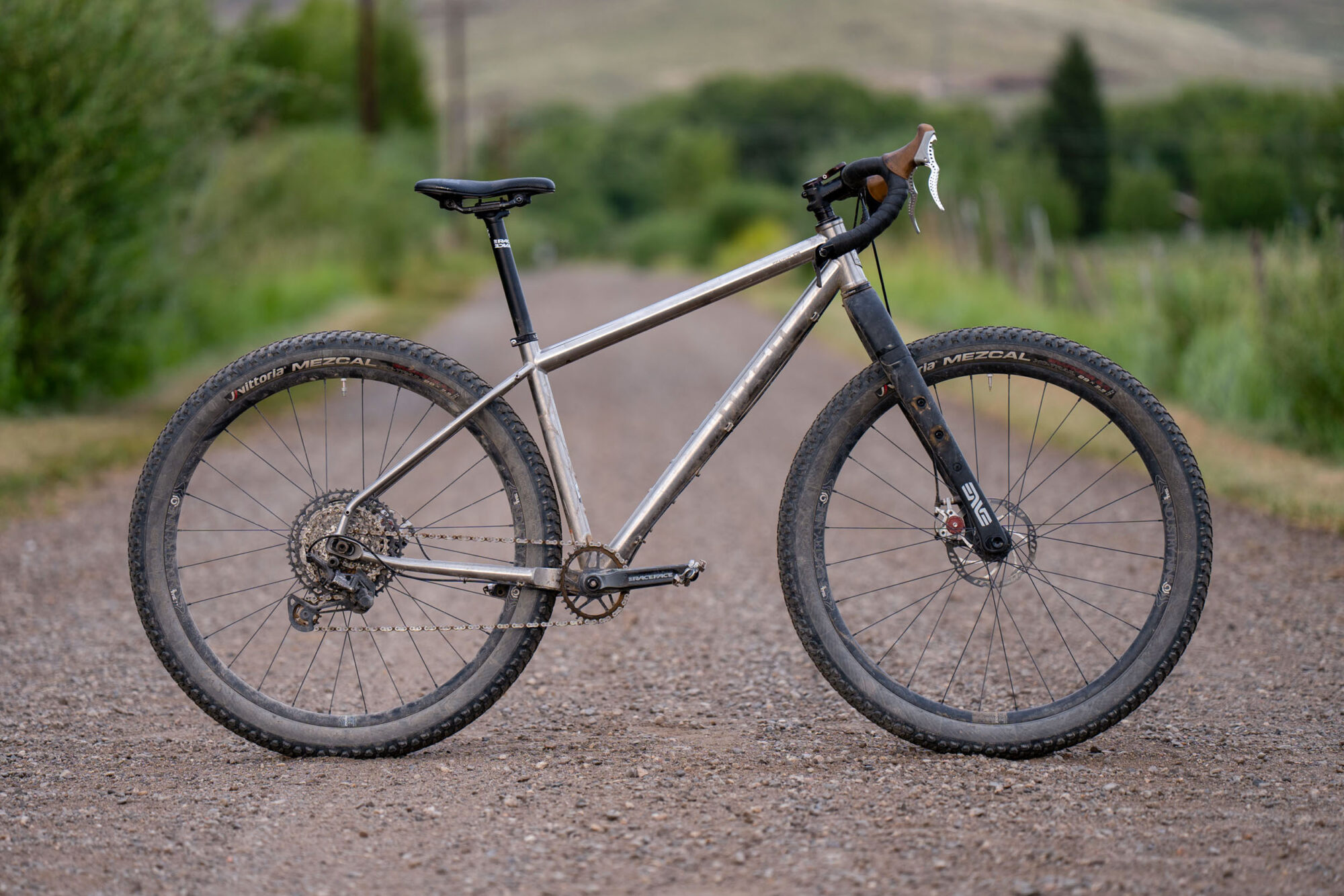
This was pretty transparent after the first ride. It also introduced an obstacle with the fit. Because of the unique nature of flat and drop-bar geometry, it’s a little tricky to figure out which size and adjust it to fit. I went with their recommended medium sizing of 5’7″ to 5’11” as I fall in between at 5’9.5″ with equal torso-to-leg proportions. After jumping on the medium flat-bar build, it was clear that I needed to make some adjustments. I could do several things to make the medium flat-bar version work, such as lengthening the stem, but going to a 90 or even 100mm stem somewhat hurt my soul. I concluded that a size large bike in the flat bar orientation would have worked best. I tested the medium in flat-bar mode for several rides before throwing wide drop bars on the bike and shortening the 80mm stem to a 70. After that, the fit improved significantly.
If I were to recommend sizing for the flat-bar version, I would size up, especially if you fall in the middle or top end of their recommended sizing, or follow their recommended sizing if you are going with the drop-bar version. Regarding standover, the medium had just enough clearance for me, with 810mm, which is just shy of 32″ inseam. I’ll always take a tight standover in exchange for larger frame triangle space.
The Otso Fenrir Ti features a 68-degree head tube angle built around a 495mm axle-to-crown length. The included ENVE Mountain Fork comes set up in the 52mm offset position but also allows you to switch to 44mm offset with a built-in flip-chip dropout. The bike is suspension corrected for a 100mm fork or roughly a 490mm axle to crown. If you wanted to slacken the bike, you could throw a 100 or 110mm Rock Shox SID or the like on there to accomplish that. The bike is also equipped with a 75-degree seat tube angle. That, paired with a somewhat taller 623mm stack and a 415mm reach, gives the Fenrir a very comfortable and upright pedaling position for long day rides. Yet, with a longer front-center and overall wheelbase, this bike offers a lot of confidence when the riding trends downhill or just plain fast.
Otso’s Tuning Chip
Speaking of the wheelbase, Otso’s tuning chip allows you to adjust the chainstay length, which slightly changes the bike’s overall geometry. The machined aluminum chip is reversible and can be installed in two fixed positions: all the way back, which gives you a 450mm chainstay, or all the way forward, which provides you with a 430mm chainstay. Otso also has a chip that you can purchase separately ($19) that allows you to mount the axle in a middle position. This gives it a moderate 440mm chainstay, which I found to be my preferred position during the testing period. You can also buy sliding inserts for even more versatility, allowing the bike to be set up as a singlespeed or with an internally geared hub.
I found that each position offers a distinct ride feel after trying each option with the tuning chip. I tested the chainstay in the rear position during the first half of my time on the bike, which gave it a solid, sure-footed feeling, especially while loaded. I then positioned it in the middle position, which made the bike more snappy with quicker acceleration while still maintaining plenty of stability. It’s also worth mentioning that by adjusting the tuning chip, the bottom bracket height shifts upward 4mm, and the head tube angle changes by 0.2°. And, of course, the wheelbase changes. For reference, the Salsa Cutthroat has 445mm chainstays and a 1090mm wheelbase. The Fenrir starts at 1130 and can go as long as 1150 millimeters.

Otso designed the Fenrir with plenty of tire clearance. According to Otso, the frame can fit 27.5 x 3.0” tires or 29 x 2.6″ in the rear dropout position, although I never tried the former. I tested it with 29 x 2.6″ Vittoria Mezcals in the rear and middle positions, and it worked great with room to spare in the rear position. I even nearly eked out a 2.4″ Maxxis Aspen in the short 430mm position, but it was too close for comfort. Otso states that it fits a 29 x 2.3″ tire in that position. And if you want to go with some skinnies, the 68/70mm bottom bracket drop will make it feel similar to a gravel bike. The middle position with 2.6″ Vittoria Mezcals was the sweet spot for me. In my opinion, any bikepacking bike worth its weight in salt should have a clearance for 2.6″ tires. On the subject of clearance, the one downside is that the Fenrir is only compatible with a 1x drivetrain as a result.
Otso Fenrir Ti Frame Features
The Boost-spaced Fenrir has fully external routing, including the ENVE fork. However, it does have internal dropper routing, which I wish I’d tested on this bike but didn’t, as it didn’t come with one, and I don’t own a 31.6mm dropper. That diameter seems like overkill for this type of bike, but I assume it has to do with the limitations or lack of availability of different titanium tubesets. I found myself holding back on descents with the rigid post, so I recommend the Wolf Tooth Resolve upgrade over any other upgrade on the bike.
The bike has a 73mm threaded bottom bracket, and this particular rig comes with post-mount brakes, which I love. However, Wolftooth has a bunch of cool accessories that make this bike more adaptable, including their flat-mount tuning chip if you want to build it up with flat-mount brakes.
Speaking of, the Fenrir has loads of provisions for bikepackers, including a set of two-pack and four-pack mounts inside the frame, three-pack mounts on the underside of the down tube, and rear rack and fender mounts. Otso even offers tuning chips with threaded rack mounts. The front triangle itself is also very large, providing plenty of frame bag capacity. Additionally, the protruding head badge offers excellent protection if you have a handlebar system that tends to rub.
Components & Build Kit
I will only dive a little bit into components, as the Otso Fenrir Ti comes in various builds, which can be found on their website. The bike had an XT drivetrain and Race Face Aeffect cranks. To make a relatively cheap conversion to drop bars, I ended up keeping those bits on, but replacing flat bars and flat bar controls with a Microshift bar-end shifter. I threw a set of TRP RRL SR Levers that a friend loaned me, paired with Some Avid BB7 road calipers. I was thrilled with this setup and especially happy with how it performed for the cost and ease of swapping. Here’s the full build kit as I mostly rode it:
- Fork: Enve Mountain Fork
- Wheels: Industry Nine 1/1 Trail S Boost 29
- Tires: Vittoria Mezcal 2.6 for a trip or two & Maxxis Aspen 2.4 for a few trips
- Drivetrain: XT Rear Derailleur and Cassette
- Crankset: Raceface Aeffect Crank / Raceface BB
- Chainring: Wolf Tooth 32T Oval Chainring
- Shifter: Microshift Bar End Shifter
- Bars: A really cool unreleased drop bar
- Brake Levers: TRP RRL SR Brake Levers
- Brakes: AVID BB7 Road Calipers
- Stem: 70mm
- Headset: Wolf Tooth Headset
- Seat Post: 31.6 Raceface Seat Post
- Saddle: Bike Yoke SAGMA Saddle
The bike also came with Industry Nine 1/1 Trail S wheelset, an upgraded wheelset from the stock Sun Ringle set that comes with the bike. I enjoyed the I9 wheels as the hub has a quick 90 points of engagement, and they’re pretty stiff and reliable. Finally, no Otso is complete without bits from Wolf Tooth Components, their sister company. You can choose from various bolt, headset, and spacer colors, and you can pick from three different grips if you opt for the flat-bar version. You can also choose what stem and stem length you want and what size and type of chainring you want. I decided on a 32-tooth oval ring, which was perfect for me. Overall, there is a lot of logical and fun customization you can do.
How it Pedaled
Despite the versatility of the Fenrir, I’ll be the first to admit that I preferred the drop-bar orientation, which is somewhat backward, as I find myself using flat bars over drop bars most of the time. Much of this was due to the fit and feel I mentioned earlier. The flat-bar bike gave me some seriously early 2000s hardtail mountain bike vibes, which is what Otso was going for with this geometry, but not something I’m looking for in a flat-bar bike in 2023. However, this geometry translates very well to a drop-bar mountain bike. Paired with some pretty wide drop bars, it offered an ideal setup for this unique style of bike.
I pedaled this bike from the spring into the mid-summer, riding everything from the Moab desert to 12,000-foot mountain passes in Colorado. It endured soul-crushing sandy washes to teeth chattering forest service roads, yet it managed to be at home through all of it. Otso designed a comfortable bike for all-day rides, and it set me up well for more aggressive climbs and descents and even some singletrack. An excellent example is Tincup Pass, where the rough and chunky climb didn’t deter the bike from staying planted, allowing me to continue pedaling through the chunder. After we started trending downhill, it held its own, as the overall length and 2.6″ tires allowed the bike to remain grounded and offered enough cushion, even affording a little playfulness on descents.
Because of that long front end, rolling over the bike takes a touch more time as it positions the rider’s weight back a hint from other bikes in its category, so it’s not as agile as some of its drop-bar mountain bike counterparts. From time to time, I would get passed by some friends on hardtails with suspension forks, but paired with the 99mm trail with 2.6″ tires and that longer wheelbase, it chewed through technical climbs and remained planted on rough descents, despite the rigid fork.

Most of my testing was on a loaded rig, and the bike felt very alive when packed. I think Otso accomplished this with the combination of engineering and tubeset choice. It allowed for a snappy yet very comfortable ride. Still, when I stripped the bags, the light nature of the frameset allowed the bike to race forward with each pedal stroke. While it may not be as fast as the Cutthroat, I was very pleased by its quickness and comfort.
The Otso Fenrir Ti is available as a frame for $3,550, which includes a headset, seatpost clamp, brake mounts, and Tuning Chip hardware. For $4,050, you can add in the carbon ENVE Mountain Fork, and the complete build starts at $5,120.
- Model Tested: Otso Fenrir Ti, Size Medium
- Actual Weight: 10.64 kg (23.45 lbs)
- Place of Manufacture: Taiwan
- Price: $5,120 (starting build)
- Manufacturer’s Details: Otso
Pros
- Has more MTB steering characteristics (more trail) than most drop-bar MTBs, so it holds a line better and feels more stable
- Tune-able geometry with tuning chip, which also allows the bike to be post or flat mount
- Very comfortable ride quality without sacrificing performance
- Good tire clearance for 29 x 2.6″ rubber (and should easily fit 2.8″ in rear tuning chip position)
- Pretty light for a metal bike at 23.45 pounds naked with pedals
- Loads of mounts and bikepacking provisions
Cons
- Funky sizing and build options
- Complexity and options can be frustrating to dial in the bike
- Dropper should be standard, and 31.6 diameter post is overkill
- Expensive
- 1x-specific will be an issue for some folks
- The middle tuning chip should be included
Wrap Up
Overall, I think the Otso Fenrir is a fantastic bike for folks looking for a versatile bike that can do any number of things. If you want it to be a dedicated gravel bike, it can do that. If you want it to be long and loaded down drop-bar rig, it’s fantastic. Flat-bar, old-school mountain bike? Yep. With the adaptability of this bike and a little willingness to tinker, the Fenrir can be what you want it to be. It’s a beautiful titanium frame that offers the spunk I like out of a bike without being too harsh, and after riding it for six months, it’s going to be hard not having it in the stable.
Further Reading
Make sure to dig into these related articles for more info...
Please keep the conversation civil, constructive, and inclusive, or your comment will be removed.








